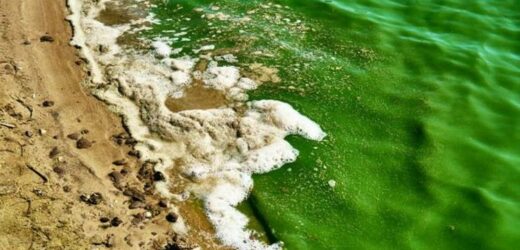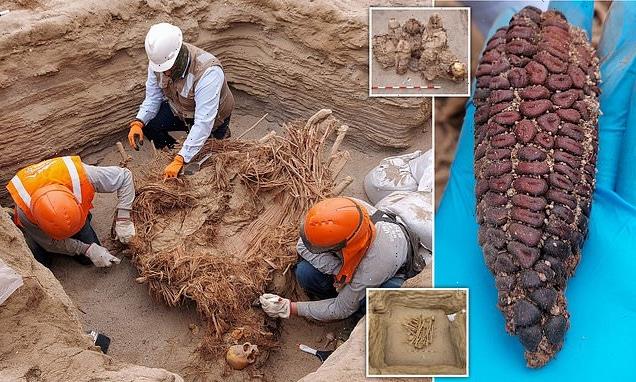Queen discusses science and space for British Science Week
We use your sign-up to provide content in ways you’ve consented to and to improve our understanding of you. This may include adverts from us and 3rd parties based on our understanding. You can unsubscribe at any time. More info
New research has suggested the chances of another mass extinction is becoming more likely after the discovery of toxic algal bloom that thrived during the Great Dying, 251 million years ago, which destroyed almost 90 percent of life in the oceans and 70 percent of life on land.
Algal blooms are found in rivers and lakes and experts believe they are an early indicator of an “ecological disaster” which parallels the “worst extinction event in Earth’s history”.
The researchers from the Swedish Museum of Natural History, led by palaeobotanist Chris Mays, state that the concentration of algal blooms during the Great Dying is as prolific as the state of the ecosystem today.
The researchers put the bloom boom down to human activity, such as greenhouse gas emissions, deforestation and soil loss.

Postdoctoral researcher Mr Mays told Vice: “We are not there yet. There was probably a six-fold increase in carbon dioxide during the [Great Dying], but, with the present steep increase in carbon dioxide, we are playing catch-up pretty well.
“And the chances of harmful microbial bloom events, along with many other deleterious facets of change (e.g., intense hurricanes, floods, wildfires), also rise all the way up this steep carbon dioxide slope.”
The researchers say the repeated correlation of algal blooms with mass extinction events is an alarming signal for environmental change.
The blooms are an integral part of ecosystems worldwide, but the effects of human-driven climate change is causing an increase which can transform freshwater habitats into “dead zones” that suffocates other species. This increases the severity of extinction and delays the recovery of ecosystems by millions of years.
DON’T MISS
Russia threatens ‘Asian NATO’ in fury over AUKUS deal[SCIENCE]
The remarkable statement Biden gave after his call with Macron[WORLD]
Brexit LIVE: France blasts UK’s ‘bad faith’ in fishing fury[UK]

Mr Mays continued: “The three main ingredients for this kind of toxic soup are accelerated greenhouse gas emissions, high temperatures, and abundant nutrients.
“Today, humans are providing all three of the ingredients in abundance.
“Carbon dioxide and warming are the inevitable by-products of burning fossil fuels for hundreds of years, and we have provided copious nutrients into our waterways, mostly from agriculture and logging.
“Together, this mix has led to a sharp increase in freshwater toxic blooms.”
Source: Read Full Article


